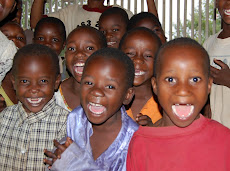
Last Sunday’s New York Times Book Review weighed in on the new self-help book “Natureshock, New Thinking About Children” in which the authors – former chroniclers of the financial bond trade – review recent research on childhood development.
The authors – Po Bronson and Ashley Merryman – cite laboratory studies that show that over-praising children comes at a price. Kids who were tested in laboratory studies and then praised for their intelligence, they say, were outperformed in a second round of testing by children who were simply commended for their efforts. The authors conclude that the “commended” students challenged themselves to do better while the “praised” kids were content with the status quo.
Bronson and Merryman also report – and this is what initially caught our attention– that the more children are threatened with punishment, the more they lie and the better they get at it. For example, the book relates how kids in a traditional colonial school in
At African Childrens Haven, we’re still struggling with how to deal with schools that receive our support and continue hitting their students. We’ll be coming out with a policy soon, but meanwhile we encourage you to share your views and let us know how you think we should proceed. Read the review
